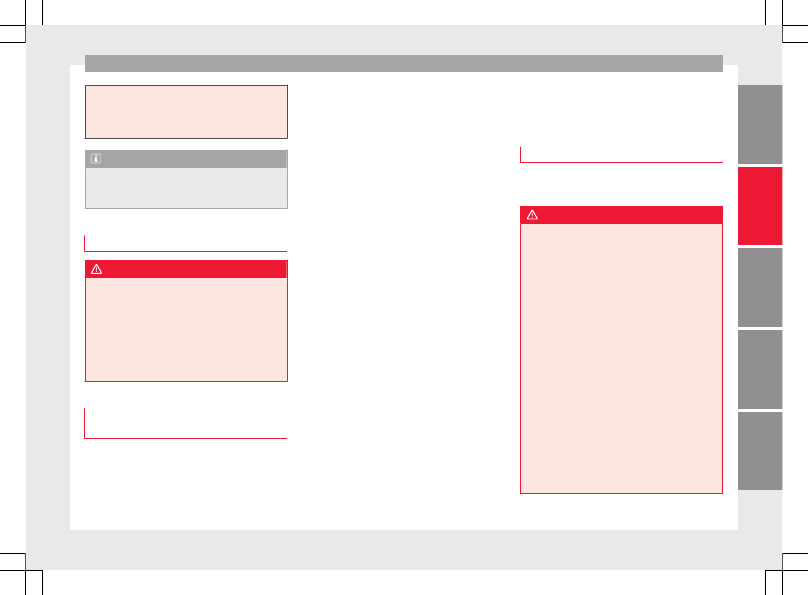Seat Alhambra. Instruction - part 17
-------------------------------------------------------------------------------------------------------------------------------------------------------------

Checking and refilling levels
labels over the heating elements and never
clean the inside of the rear window with cor-
rosive or acid products or other similar chem-
ical products.
Note
If electrical equipment is used near an aerial
built-into the window, you may observe inter-
ference in the reception of AM stations.
Notes on SEAT repairs
WARNING
Repairs or modifications which are not per-
formed correctly may result in damage or er-
rors in the vehicle operation, affecting the ef-
fectiveness of the driver assist and airbag
systems. This could result in serious acci-
dent.
●
Have any repairs or modifications carried
out at a specialised workshop.
Collection and scrapping of end-of-life
vehicles
Collection of end-of-life vehicles
An extensive network of used car reception
centres already exists in much of Europe. Af-
ter the vehicle has been delivered, you will
receive a certificate of destruction describing
the environmentally friendly scrapping of the
vehicle in accordance with applicable legisla-
tion.
We will collect the used vehicle free of
charge, provided it complies with all national
legislation.
Please see your technical service for further
information about the collection and scrap-
ping of end-of-life vehicles.
Scrapping
The relevant safety requirements must be ob-
served when the vehicle or components of
the airbag or belt tensioner systems are
scrapped. These requirements are known to
specialised workshops.
Checking and refilling levels
Filling the tank
Introduction
The fuel tank flap is on the rear right of the
vehicle.
WARNING
Refuelling or handling fuel carelessly can
cause an explosion or fire resulting in serious
burns and injuries.
●
Always make sure that you correctly close
the fuel cap to avoid evaporation and fuel
spillage.
●
Fuels are highly explosive and inflammable
substances that can cause serious burns and
injuries.
●
Fuel could leak out or be spilt if the engine
is not switched off or if the filler fuel nozzle is
not fully inserted into the tank filler neck
when refuelling. This could lead to a fire, ex-
plosion and severe injuries.
●
When refuelling, turn off the engine, the
auxiliary heating (
›››
) and turn off
the ignition for safety reasons.
●
Always turn off mobile telephones, radio
apparatus and other radio wave emitting
equipment before refuelling. Electromagnetic
waves could cause sparks and lead to a fire.
»
261